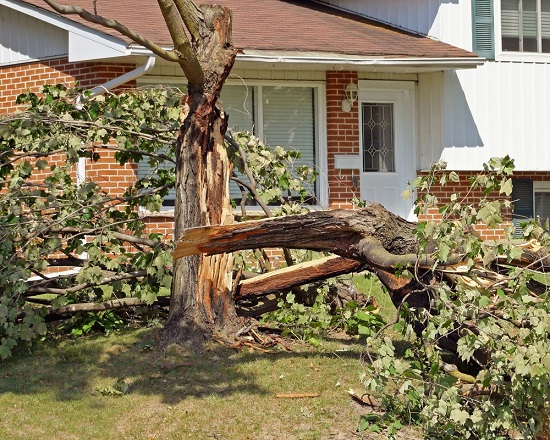
Cleaning up in the after-effects of a storm can be an ordeal for any property owner or tenant, and needs far more effort and time than getting a couple of branches and damaged limbs. Storms that greatly damage trees and other big pieces of the landscaping can be a possible risk for a Charleston homeowner or renter.
After Nature plays her heavy hand during spring storms– or other time of the year– it’s best to take a step back and create a tactical plan for the clean-up, states Porter Hayes Landscaping experts. Also, interacting with renters to prevent them from dealing with a potentially unsafe circumstance during cleanup is prudent.
Landscaping Tip: Property Owners and Occupants Probably Should not “Do It Yourself”
Depending upon the extent of storm damage from hurricane Matthew, contacting the professionals to eliminate debris and handle fallen trees is always a good idea. A storm-damaged landscape can produce a number of threats, consisting of trees that might seem stable however have actually been damaged and can fall.
In 2012, an Annapolis, Maryland, male was killed while working for a tree care company to assist clear trees downed by a serious storm. While in the backyard of a house harmed by heavy wind and rain, a tree fell on top of him. He was dead before emergency situation personnel arrived.
Energy providers should be contacted when dealing with downed power lines or hot lines that are tangled in trees.
However initially, the very best strategy is create a plan rather than jump into the clean-up too rapidly. The Center for Disease Control (CDC), recommends 6 core pointers and precautions for restoring a storm-damaged landscape.
Develop a Strategy and Determine Possible Dangers Before Storm Clean-up
Focus on the cleanup by first identifying any blocked access to the home, vehicles or entrances and exits in other places on the home. Also, determine potential risks, like trees that are unstable and partial broken limbs hanging precariously.
Operating in conditions with great visibility after the storm is essential.
Use Extreme Care when Cutting or Removing Trees
Trees are incredibly heavy and can trigger severe injury or death. During cutting and removal, trees can move, “dive” or roll.
“Trees are incredibly heavy and can trigger major injury or death if you do not comprehend how the weight moves as you cut,” advises Porter Hayes Landscaping. Cutting down trees is best left the landscape professionals.
Another potential risk is chainsaws and other cutting devices used to cut and get rid of trees. Only knowledgeable landscape professionals of equipment like chainsaws need to be allowed to the “heavy lifting” of clean-up.
Check Standing Trees for Instability and Possible Elimination
A mindful assessment needs to be made relating to additional tree cutting to support and rebalance the damaged trees after limbs and other debris has been removed. A tree that looks like it totally endured the storm may really be harmed. We suggest a close evaluation of the tree to determine if any structural damage has been done.
Likewise, some steady however unpleasant trees may need to be removed.
Prune Bushes, Smaller Trees and Perennial Plants and Flowers Affected by Storm Damage
Smaller sized ornamental trees, shrubs or bushes and perennials frequently are damaged by the storm. A determination needs to be made if the harmed plant life can be restored or if elimination is needed. Each plant heals in its own way and some might not have the ability to get rid of the damage.
Inspect Landscape for Drain Issues
Storms frequently produce heavy rains that can wash away a landscaping Charleston. In addition, the drainage system might be affected.
Assess any soil erosion and changes to site drain, and figure out if a problem exists and the best ways to repair it. Likewise, mulch that rinses of beds will need to be removed and replaced.
Manage Standing Water With Care
Standing water arising from heavy rains and flooding can be a health threat, especially in extreme scenarios when the house has been flooded. Water from a flooded structure can include fecal product from overruning sewage systems as well as agricultural and hazardous waste.
The CDC suggests using protective clothing and gloves, and keeping open sores or new cuts exposed to floodwater as clean as possible. Use soap and apply an antibiotic ointment to prevent infection throughout cleanup.
While the damage from serious weather condition may seem done when the storm vacates, numerous elements must be thought about prior to taking on clean-up. A well-organized strategy will help the homeowner and resident securely get the landscape back on its feet. Don’t forget, you have the option to hire a landscaping company for professional help.
Call Porter Hayes Landscaping for help your landscaping cleanup in Charleston, Mount Pleasant or North Charleston.
Porter Hayes Landscaping LLC
Charleston, SC 29419
(843) 532-3270
http://www.porterhayeslandscaping.com/
No comments:
Post a Comment